The Indian Air Force (IAF) continues to be at a near all time low of 33 fighter aircraft squadrons. In fact, it will require around 500 new aircraft by 2030, to compensate for the additional phasing out and to make good the existing shortfalls. The IAF had planned to replace the ageing fleet of Russian MiG-21 and MiG-23/27 with the LCA Tejas and the Rafale. Delays in the LCA Tejas programme and the Rafale deal having been truncated from 126 to 36 aircraft, has upset all acquisition plans and put the IAF back in a difficult situation.
India is the biggest defence equipment buyer and its requirements are only growing…
The Indian Air Force (IAF) continues to be at a near all time low of 33 fighter aircraft squadrons. In fact, it will require around 500 new aircraft by 2030 to compensate for the additional phasing out and to make good the existing shortfalls. The IAF had planned to replace the ageing fleet of Russian MiG-21 and MiG-23/27 with the Light Combat Aircraft (LCA) Tejas and the Rafale. Delays in LCA Tejas programme and the Rafale deal having been truncated from 126 to 36 aircraft, has upset all acquisition plans and put the IAF back in a difficult situation. It finally convinced the government to acquire a modern single-engine fighter through global tender.
On January 03, 2017, the then Minister of Defence Manohar Parrikar announced plans for a competition to select a Strategic Partner to deliver 200 new single-engine fighters to be Made-in-India. Lockheed Martin F-16 Block 70 and Saab Gripen JAS-39 E emerged as the possible contenders. A global tender is likely to be issued in early 2018, with an Indian private company nominated as the production agency. The final government-to-government deal could be signed in 2021. This would mean eight squadrons plus reserves. India was to use this deal to push through the ‘Make-in-India’ initiative with major Transfer of Technology, however, both the companies recently publically denied possibility of full Transfer of Technology. SAAB in any case, uses some foreign systems including the engine from USA. The MoD was in an advanced stage of preparing to issue a global tender, but such statements came as a rude shock. Only a handful of aviation players have the major technologies in terms of radar, engines, stealth and EW systems.
India is the largest market and it is also an emerging power. No one wants India to become independent on this count. Yet India is the biggest defence equipment buyer and its requirements are only growing. With European economies shrinking and China becoming somewhat independent, both Western and Russian arms manufacturers are wooing India. How the single-engine fighter will pan out, is still an open-ended question.
Defence acquisitions are not standard open market commercial procurements and have unique features…
The ‘Make-in-India’ Initiative
Prime Minister Narendra Modi has been personally spearheading the Make-in-India campaign and had indicated plans to spend $150 billion to create jobs in defence production. China began a similar exercise nearly two decades earlier. Defence production is a key element in ‘Make-in-India’ strategy if India was to aspire to become a global power. Such an arrangement could include making India a production hub of that aircraft for global sales. DPP-2016 was formulated to achieve enhanced self-reliance in defence manufacturing, to facilitate ‘Make in India’ and also simplify or rationalise various aspects of procurement.
Defence acquisitions are not standard open market commercial procurements and have unique features such as supplier constraints, technological complexity, foreign government regulations, denial of technology, high cost and geo-political ramifications. Concept of strategic-partnerships is meant to resolve some of these. Also, a balance is meant to be maintained between expeditious procurement, high quality and cost-effectiveness. The proposal is to leverage the indigenous manpower and engineering capability, and consolidate design and manufacturing infrastructure within the country.
The ‘Make’ procedure encourages increased participation of the Indian industry, especially MSMEs. The DPP also encourages quicker decision making and ensure level-playing field while keeping self-reliance as a key aim. Foreign Direct Investment in defence has been opened up to 100 per cent in specific cases where specified technologies will get transferred.
36 French Dassault Rafale aircraft have already been contracted for and will begin inducting in 2019…
Committed Plans of the IAF
36 French Dassault Rafale aircraft (two squadrons) have already been contracted for and will begin inducting in 2019, with all aircraft delivered by 2022. The twin-engine, Dassault Rafale multi-role fighter is already flying with the French Air Force and Navy. Rafale missions include air supremacy, interdiction, aerial reconnaissance, ground support, anti-shipping strikes and nuclear deterrence. The aircraft has seen operational action in Iraq, Syria, Mali, Libya and Afghanistan. Major upgrades on the basic aircraft will mature by 2018, which will include integration of the Meteor BVR missile. The Rafale is slated to be the primary combat aircraft of the French Air Force until 2040 or later. The IAF has committed for 40 LCA Tejas Mk I and 83 Mk 1A. The Mk 1A variant should start inducting in 2020. Later, the IAF may have the Service Qualification Requirements (SQR) compliant LCA Mk II. Four squadrons of LCA Mk II are planned. The Mk II with the more powerful 98 kN thrust F414 engine, will be ready not earlier than 2022.
The Indo-Russian FGFA is the Fifth Generation Aircraft. The IAF had plans of 200 twin-seated and 50 single-seat FGFAs to replace the MiG-29 and MiG-27. At the estimated unit cost of $100 million, it is not going to be cheap. The FGFA is a project currently in confusion. Officially announced in 2007, it was to have 50:50 work and cost sharing. The ground reality is that, today, HAL has only 15 per cent work share. In 2010, Russia flew its own single-seat prototype even though the IAF was keen on a two-seat variant. By now, the IAF had assessed the project and given over 40 observations on technology, engine, stealth, maintainability and armaments among others.
The D&D budget has gone well beyond the $6 billion earlier meant for each side. Initially, both sides were to acquire 250 aircraft each; the numbers have since been scaled down. The last known figure known to the IAF was down to 144. As India was still trying to make up its mind, Russia has started inducting its variant as SU-57 and is demanding $7 billion more for D&D of the IAF’s two-seat variant. Although India had told the Russians that it was ‘ON’ in the project, physical contracting has still to take place. The grapevine is that the IAF may scale down numbers to 60 to 80.
Design work has begun for DRDO-HAL’s Advanced Medium Combat Aircraft (AMCA) twin-engine fifth generation fighter. It is meant to replace the aging SEPECAT Jaguar and Dassault Mirage 2000 fighters. The AMCA’s first flight is scheduled to occur in 2023 – 2024. This multi-role aircraft is planned to have stealth, super-cruise, super-maneuverability, advanced AESA radar and advanced avionics. With little know-how in the country, and even the LCA still having miles to cover, all these technologies will require foreign support or collaboration. France made an unsolicited offer to help in development of AMCA’s engine with full access to the Snecma M88 engine and other key technology, while the US has offered full collaboration in the engine development with full access to the F-414 and F-135. The AMCA’s basic wing-form looks similar to that of the F-22.
The Single Engine Contenders
The Medium Multi-Role Combat Aircraft (MMRCA) tender, where the Rafale finally won the competition, originally had six contenders. The contest was between Boeing F/A-18E/F Super Hornet, Dassault Rafale, Eurofighter Typhoon, Lockheed Martin F-16 Fighting falcon, Mikoyan MiG-35 and Saab JAS 39 Gripen. All these aircraft had gone through extensive ground and flight evaluation by a crack team of IAF test pilots and engineers. After the Rafale was shortlisted in 2012, and negotiations seemed to be running rough, a few among the original six contenders for the MMRCA contract continued to push for a possible fighter aircraft contract with India.
When the MMRCA tender was finally cancelled in 2015, and it was decided to purchase only 36 Rafale jets in a Government-to-Government deal, it was clear that the IAF still needed more numbers. Lockheed Martin (F-16), Boeing (F/A-18) and Saab (JAS-39 Gripen) moved aggressively with more sweetened deals that included offering setting up exclusive production lines in India, near full Transfer of Technology and making India an export hub for that aircraft. They also offered to help resolve LCA technology hold ups including salvage the Kaveri engine programme.
The Lockheed F-16 Block 70 is the latest variant with great improvements. Saab JAS 39 Gripen E/F is being offered with flexibility of combinations in engine and avionics. The decision to have a single-engine aircraft was primarily to cater for LCA delays and also there were cost and operational considerations because with the IAF already having SU-30MKI, MiG-29, Jaguar, Rafale, all being twin-engine, a single-engine aircraft would be cheaper and bring desired numbers. It will be interesting to study each aircraft and the offer to put things in the correct perspective.
The F-16 ‘Fighting Falcon’ is a single-engine air-superiority, multi-role fighter aircraft which first flew in 1974, and has since been operated by 26 countries…
Lockheed Martin F-16
The F-16 ‘Fighting Falcon’ is a single-engine air-superiority, multi-role fighter aircraft which first flew in 1974, and has since been operated by 26 countries. Nearly 4,600 of its variants have been built till date and 2,242 are still flying. Its current cost is around $50 million. The F-16 can be called a ‘modern day MiG-21’ in terms of success and huge world-wide sales. The F-16IN Super Viper was initially on offer to India which was similar to the F-16E/F Block 60 (4.5 Generation) supplied to the UAE. The features included conformal fuel tanks, AN/APG-80 AESA radar, GE F110-132A engine, and advanced avionics. Pakistan Air Force (PAF) has the older Block 52 variant. On offer as a package was the F-35 Lightening II aircraft in the future, as replacements, if the F-16 was chosen. The existing orders would keep F-16 production-line live till 2018. The Block 60 is powered by the General Electric F110-GE-132 turbofan with a maximum thrust of 144.6 kN, the highest thrust engine developed for the F-16.
The USAF has already upgraded F-16 using technologies imbibed from the F-35 programme. One key upgrade has been an auto Ground Collision Avoidance System (GCAS) to reduce instances of Controlled Flight Into Terrain (CFIT). Onboard power and cooling capacities limits are being upgraded, to take on additions of more power-hungry avionics. Upgrade also includes Raytheon’s Centre Display Unit, which replaces several analog flight instruments with a single digital display. It will also get the new AESA radar, the Scalable Agile Beam Radar (SABR). Raytheon is developing a Next Generation Radar (RANGR) based on its earlier AN/APG-79 AESA radar as a competitor to AN/APG-80 for the F-16.
Also on offer are many weapons including latest versions of the AIM-120 AMRAAM. South Korea, Oman, Turkey and the US Air National Guard have already requested F-16 upgrades. The F-16 has been scheduled to remain in service with the US Air Force until 2025, till replaced by F-35A variants. All USAF F-16s will receive service life extension upgrades. The F-16s have had extensive combat participation in conflicts in different terrains since Bekaa Valley in 1981, Iraq, Afghanistan, Libya and Syria. Older F-16s are being converted into QF-16 drone targets.
F-16 Block 70
The F-16 Block 70 builds on the basic super successful combat aircraft introducing new technologies with improved radar systems, advanced weapons capabilities and enhanced battle-space awareness. On offer is Northrop Grumman’s advanced APG-83 Active Electronically Scanned Array (AESA) radar, a new avionics architecture and structural upgrades to extend the structural life by more than 50 per cent.
While Americans have greater power to arm-twist India or put restrictions, they critically need India in their Asia-Pacific pivot strategy…
The APG-83 provides high quality target area detail and digital map displays that can be tailored with slew and zoom features. It provides fifth generation fighter radar capabilities by leveraging hardware and software commonality with F-22 and F-35 AESA radars.
Operational capabilities are enhanced through an advanced data-link, targeting pod and weapons, precision GPS navigation and the Auto GCAS. The system is currently also being integrated into the US Air Force’s F-16 fleet and similar systems being developed for the F-22 and F-35. Lockheed Martin has certified more than 3,300 carriage and release configurations for greater that 180 weapon and store types. The new Center Pedestal Display (CPD) provides high-resolution color display of AESA and targeting pod data. The CPD is also compatible with the Night Vision Imaging System. The F-16 remains the world’s most successful, combat-proven multi-role fighter ever produced, and the F-16 Block 70 is the newest and most technologically advanced F-16 ever offered.
The F-16 ‘Block 70/72’ is being offered exclusively for India under the ‘Make-in-India’ programme. The proposal would give India partial control along with the US over which countries are able to purchase F-16 fighter jets and spare parts. If India were to select the F-16, it would become the sixth country to build the aircraft. The PAF operates nearly 100 F-16s. Bulk of the Pakistani fleet consists of Turkey upgraded Block 52 standard. It also has 18 F-16C/D Block 50/52 planes. Pakistan is worried that F-16 production shift to India will have implications for it. US may coordinate their product support through Turkey.
The F-16 can be called a ‘modern day MiG-21’ in terms of success and huge world-wide sales…
Lockheed Martin and India
Lockheed Martin has been in India for more than 25 years. Lockheed Martin is the pre-eminent designer, developer and manufacturer of the world’s most advanced fighter aircraft such as the F-22 and F-35. They have a partnership and Joint Venture company with Tata Advanced Systems Limited (TASL) where airframe components for the C-130J airlifter and the S-92 helicopter are manufactured in India. It is a partnership between the world’s largest defence contractor and India’s premier industrial house. That gives the company a headstart in terms of ‘Make-in-India’ presence. The two companies have signed a landmark agreement with intent to join hands to produce the F-16 Block 70 in India to meet the IAF’s single-engine fighter needs. It will provide India the opportunity to produce, operate and export F-16 Block 70 aircraft. F-16 production in India would support thousands of Lockheed Martin and F-16 supplier jobs in the US, and create new manufacturing jobs in India, and position Indian industry at the centre of the most extensive fighter aircraft supply ecosystem in the world.
Saab JAS 39 E/F Gripen
JAS 39 Gripen first flew in December 1988. On that count it came 14 years later than the F-16. The 250 aircraft built are flying in Sweden, Czech Republic, Hungary, Brazil, South Africa and Thailand. The aircraft has been sourced roughly 67 per cent from Swedish or European suppliers and 33 per cent from the US. The JAS 39 E and F variants have adopted the less expensive F414G power-plant vis-à-vis the Eurojet EJ200. All operators also have access to the Gripen’s source code and technical documentation, allowing for upgrades and new equipment to be independently integrated. On offer to India initially was the Next Generation (NG) version of the Saab JAS 39 E/F Gripen with more powerful power-plant (EJ-200), new avionics and AESA radar.
On offer to India initially was the Next Generation (NG) version of the Saab JAS 39 E/F Gripen with more powerful power-plant (EJ-200), new avionics and AESA radar…
In September 2015, Saab announced that an Electronic Warfare (EW) version of the Gripen F two-seater was under development. The aircraft cost was around $60 million. The Swedish Armed Forces plan to maintain 100 C/D-model aircraft until 2042. The first Gripen E was rolled out on May 18, 2016. Sweden plans to order the Gripen NG, designated JAS 39E/F, that will enter service in 2018, and the cost will reduce only in case of export orders. SAAB proposed significant Transfer of Technology and to make India ‘an independent manufacturer’ of the fighter jets. The potential customers include Botswana, Brazil, Colombia, Croatia, Finland, Indonesia, Poland, Slovakia and Switzerland. In a proposal that has the backing of the Swedish government, Sweden has strategically offered to collaborate with the Adani group, who will be its production partner in India, to use their muscle to bid for the Gripen sale.
SAAB in India
Saab has been a supplier to the Indian armed forces for over three decades. In 1974, India acquired Saab Carl Gustav Anti Tank System. In 1978, Saab 37 Viggen was a competitor for the IAF’s Deep Penetration Strike Aircraft (DPSA) eventually won by SEPECAT Jaguar. In 2002, Carl Gustav Anti Tank System was upgraded. At Aero India 2005, for the first time the Gripen was displayed. In 2007, Saab set up office in India. In 2008, Saab offered Gripen to the IAF. In 2008, Saab received production orders from HAL for the Integrated Defensive Aids Suite (IDAS) for the Indian Advanced Light Helicopter (ALH). In 2009, Saab signed an Agreement with QuEST Global for supply of machined parts. In 2010, Saab signed an MoU with Samtel to jointly develop, manufacture and market the RIGS Head-Up Display. Saab has a contract with CIM Tools Pvt. Ltd. (Bengaluru) for the manufacture of machined components for the Boeing 787.
Saab has an order from the Directorate General of Lighthouses and Lightships (DGLL) for a Coastal Surveillance System. Saab and BEL also have tie-ups for enhancing India’s Coastal Surveillance systems. In 2011, Saab and Mahindra announce a strategic agreement to establish the Saab India Technology Centre in Hyderabad. Saab has a tie-up with Wipro for the development of Saab’s LEDS. In 2012, Saab and Pipavav Offshore and Defence Engineering Ltd. jointly announce forming of a group called Combat System Engineering Group (CSEG). Later Saab acquired 3.33 per cent stake in Pipavav.
Both aircraft have already been technically evaluated to great extent during MMRCA trials…
In 2013, Saab received first order from HAL for the serial production of an integrated electronic warfare self-protection system for installation on the Indian Army’s and IAF’s Advanced Light Helicopter. In 2013, Saab and Quest inaugurated the Aero-structures Assemblies India Pvt. Ltd. (AAI) facility at Belgaum. Saab and the Kalyani Group has a strategic alliance to partner for Indian Army air defence projects, including the VSHORAD and SRSAM requirements. Saab and Ashok Leyland have teamed up to provide the Saab SRSAM BAMSE missile system with Ashok Leyland high-mobility vehicles. In 2014, Saab and AAI rolled out the first batch of A-380 structural assemblies from their facility in Belgaum. In 2015, Saab received follow-on orders for the ALH’s EW System. Saab has offered a fighter sensor package for the Tejas LCA Mk1A. The package consists of a state-of-the-art Saab AESA fighter radar closely integrated with a compact electronic warfare suite using Gallium Nitride-based AESA technology.
Decision Matrix India
Both aircraft have already been technically evaluated to a great extent during MMRCA trials. In the absence of a formal Request for Proposal (RfP), numbers required and technical requirements are still not clear. Whether the government will follow the standard time-consuming DPP procurement approach or fast track through government-to-government contract, still has to evolve. Cost, extent of technology transfer and support in setting up production facilities will be a key factor for selection. India will also have to take a call on the liabilities for servicing older customers that will shift along with exclusive production line. All these aircraft have gone through major airframe, engine and avionics upgrades over the years. Effectively, the aircraft can be called of current vintage.
Saab has already offered the latest Gallium Nitrate AESA technology without any strings or restrictions. The US has still to offer full AESA technology. Having failed in developing the Kaveri engine, India desperately needs aircraft engine technology. Gripen NG has high reliance on US-supplied hardware, including electronics, weaponry and the GE F414 engine, as a factor that may hamper its ability to be exported. There are little over 200 Gripen in service with various military users. This would mean a very small market for India.
Whichever aircraft India chooses, must carry on for at least 40 years without technological obsolescence…
While on the one side, India will always be able to deal from a position of strength with Sweden, on the other, Sweden has little leverage to support India in any international forum. While Americans have greater power to arm-twist India or put restrictions, they critically need India in their Asia-Pacific pivot strategy. India can take advantage of this. A large number of fighter aircraft around the world are using American engines. The GE-414 would bring commonality with LCA Mk II. India has already indicated this to USA under the bilateral Defense Technology and Trade Initiative (DTTI).
Internationally, 300 aircraft is a cost-effective production line to set-up. Whichever aircraft India chooses, must carry on for at least 40 years without technological obsolescence. But we may still be dependent on a US firm for the engine. The Logistics Exchange Memorandum of Agreement (LEMOA) has already been signed and more agreements will follow. India needs military might as a deterrent for a possible two-front war threat by the China and Pakistan combine. The IAF awaits early completion of the process.





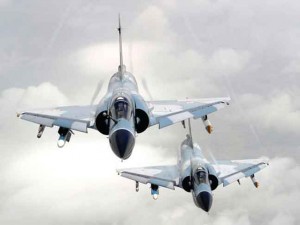
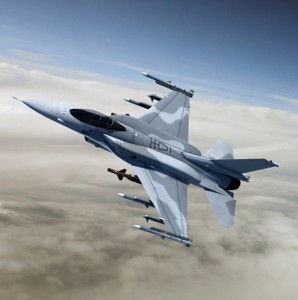
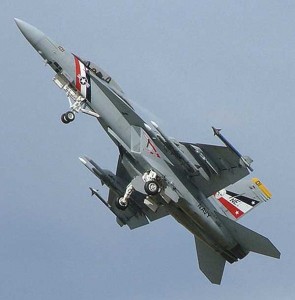
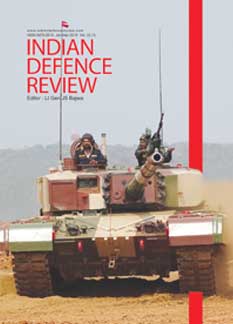
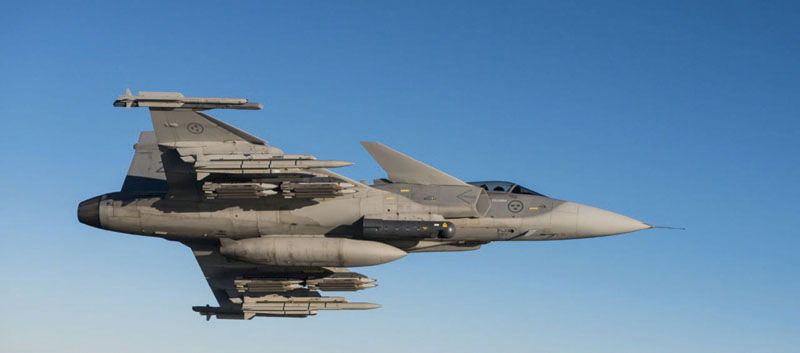

Tough decisions for the IAF and the Govt bearing in mind what the foreign governments will allow?
If F-16 will pave way for F-35 better India make 126 F-16 with 100% TOT followed by 126 Tejas-II and induct 100 F-35 before 2030. INS Vikramaditya and INS Vikrant should also fly F-35B from its deck along with Mig-29Ks and INS Vishal should field F-35C in future.
I don’t think F35 is a good option instead we wait for PAKFA navy variant which is much more cost effective and cheaper than F35. I know VTOL is something that will be lost but do we really need VTOL